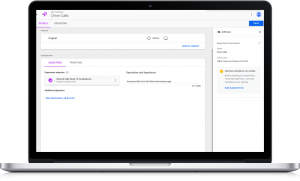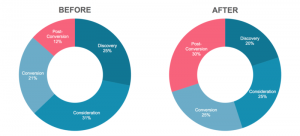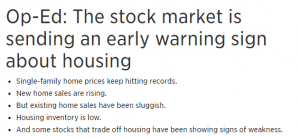Sales are the absolute lifeblood of your eCommerce store. Simply put, without sales, you’ll go out of business and be forced back to your office job. Because of this, you’re always looking for new ways to supercharge your sales. To get more people visiting, exploring, and buying on your site.
eCommerce has some unique advantages over brick and mortar stores in terms of generating sales. If your sales are tied to a physical location, the only way to increase sales is to increase the amount of foot traffic coming to your store. With eCommerce, however, you can reach a much broader audience and get sales from all over the world.
And as you probably know, social media is an amazing way increase the amount of web traffic to your eCommerce store.
But here’s the deal: not all social media posts are created equal.
Some platforms are more effective for generating traffic. Others are more effective at conversions. Additionally, the way you post on the different platforms affects the amount of sales you generate. You can’t post the exact same content across every platform and expect great results.
Feeling confused? In this post, we’re going to break down the how, what, and why of increasing sales through social media. By the end, you’ll know how to supercharge your social media eCommerce sales.
Facebook Is Still King Of The Jungle
With over 1 billion daily users, it shouldn’t be too surprising that Facebook is still driving the majority of social media traffic and eCommerce sales. In a recent study, Shopify found that a whopping 63% of social media visits to their eCommerce stores came from Facebook. In terms of revenue generated, Facebook absolutely crushes all the other platforms.
But (and this is crucial), Facebook doesn’t rule every industry. Antiques and collectibles are ruled by Pinterest. Digital products are the domain of YouTube. Electronics and appliances are dominated by (oddly) Reddit.
On top of this, different products perform better across different platforms. Shopify found that certain watches do well on Pinterest, some bracelets do well on Facebook, and some shoes do well on Twitter.
So what should you do with information? Two things:
- Make sure you’re on Facebook consistently. Your customers are on Facebook, without a doubt. You may have to find where they hang out, but they’re certainly there. If you’re not playing the Facebook game, you’re missing out on a lot of sales.
- Experiment with a variety of social media platforms. Depending on your product, you may generate more sales on one platform than another. For example, if you’re in the fashion industry, a lot of your customers will be on Pinterest. Customize your social media strategy to the desires and platforms of your customers.
Once you find the platforms that work best, double down on those. Put your time and energy into those that clearly work well for your business.
Once you know what platforms work best, follow these steps to drive more sales.
#1 – Post With Consistency
If you only post once every three weeks, you’re not going to get much traction. The most effective brands post consistently on social media.
Posting consistently does two things. First, and most obviously, it gets your brand in front of more people. Just because you post something doesn’t mean it will be shown to all your followers. Almost all platforms utilize an algorithm which determines what posts will be shown when and to whom. By posting consistently, you ensure you show up in front of as many people as possible.
Second, it shows potential customers that you’re active. If you’re active, there’s a greater chance they’ll leave comments, share your posts, and engage with you. This, in turn, leads to more sales.
#2 – Optimize Every Post
You need to know the keywords your customers are searching for. Once you know those high-conversion keywords, you can begin incorporating them into your social media posts. For example, if you know that men on Twitter are searching for “best disposable razors”, consider including those words in your Twitter posts.
#3 – Include Visual Content
Visual posts tend to get shared more than text only posts, meaning you should always seek to include some type of image in your social media posts. Additionally, visual posts are easier to pick out while skimming through busy social media feeds.
Try to include images that present a pattern interrupt for potential customers. A pattern interrupt is something that catches their attention and breaks into their attention. Surprising images can function as that pattern interrupt.
Remember, some platforms are almost exclusively visual. When using Instagram and Pinterest, it’s even more important to utilize striking images.
#4 – Share Great Reviews
Few things are more valuable and powerful than excellent customer reviews. Great reviews show potential customers that you’re an outstanding company who produces outstanding products.
When you’re purchasing on Amazon, what’s the first thing you do? You read the reviews. Products with good reviews get purchased at a much higher rate than those with few or even negative reviews.
If a customer leaves a great review, share it on social media and say thanks to that customer! It’s a great way of building trust with your audience.
#5 – Don’t Be Constantly Salesy
Brands that constantly post sales pitches aren’t going to succeed on social media. One of the big advantages of Twitter, Facebook, and Pinterest are that they allow you to be transparent and authentic with your customers.
Share posts that are valuable to potential customers. Interact with them. Tell stories, share important news, or provide helpful suggestions. Balance out your sales posts with posts that help or inspire your customers. You want them to see your social media feed as valuable.
#6 – Utilize Those Sharing Buttons
Your website should have social sharing buttons in a variety of places, including product pages, review pages, and any informative articles/blog posts you may have on your site. If you have particular sales offers running, make sure those are shareable as well.
When someone shares something with their social media following, it’s a vote of trust in you and your company. It shows that they like your company and would recommend you to their friends. This positive word of mouth marketing can be far more effective than straight up advertisements.
#7 – Court Social Media Influencers
Social media influencers are those with large numbers of followers on a particular platform. When they share a product or website, it almost always results in a sales or traffic spike. If you are able to get an influencer to share about one of your products, it can be a huge boost for your business.
But how do you develop relationships with these influencers? Reach out to them personally. Offer them free products. Ask if they might be willing to do a sponsored post (which you’ll certainly have to pay for but may pay off). A share from an influencer can generate enormous results for your business. Take the time to invest in courting a few.
#8 – Interact With Your Followers
Social media isn’t just a megaphone for you to share your products with the world. It’s also a fantastic tool for engaging and interacting with your followers. When you do this, you show that you are a person, not just a faceless corporation. You also build a trust-based, value-added relationship with potential customer. You’re not simply shouting at them. Rather, you’re providing useful information to them and helping them.
Join groups and forums. Respond to comments. Use live video to interact with customers in real time. Address any complaints. Your goal is to interact consistently and helpfully with your customers.
#9 – Utilize Hashtags
Hashtags (keywords that begin with “#”) allow potential customers to find you on social media. For example, let’s say you sell fitness equipment. Fitness buffs often use the word “gains” when talking about improvements in their performance. Attaching the hashtag #gains to certain posts increases the likelihood of being found by fitness enthusiasts.
#10 – Use Paid Advertising
Spending a few dollars on paid ads can dramatically increase the reach of your posts. Using paid advertising also allows you to hyper target your posts For example, if you sell products that appeal to women over the age of 50, you can create Facebook ads that will only show up in front of those people. This super specificity can cause a significant bump in sales.
Conclusion
You’re going to need to experiment with these tactics to find out what works best for your business. You’ll need to discover which platforms, formats, and even times generate the best results for your eCommerce sales.
But the bottom line is you do need a solid social media strategy. Without a strategy, your posting will be inefficient and ineffective, and not generate consistent results.
Your customers are waiting for you on social media. Get out there. Interact with them. Add value to them. Yes, it will absorb some of your time, but the results are worth it.
Digital & Social Articles on Business 2 Community(68)









